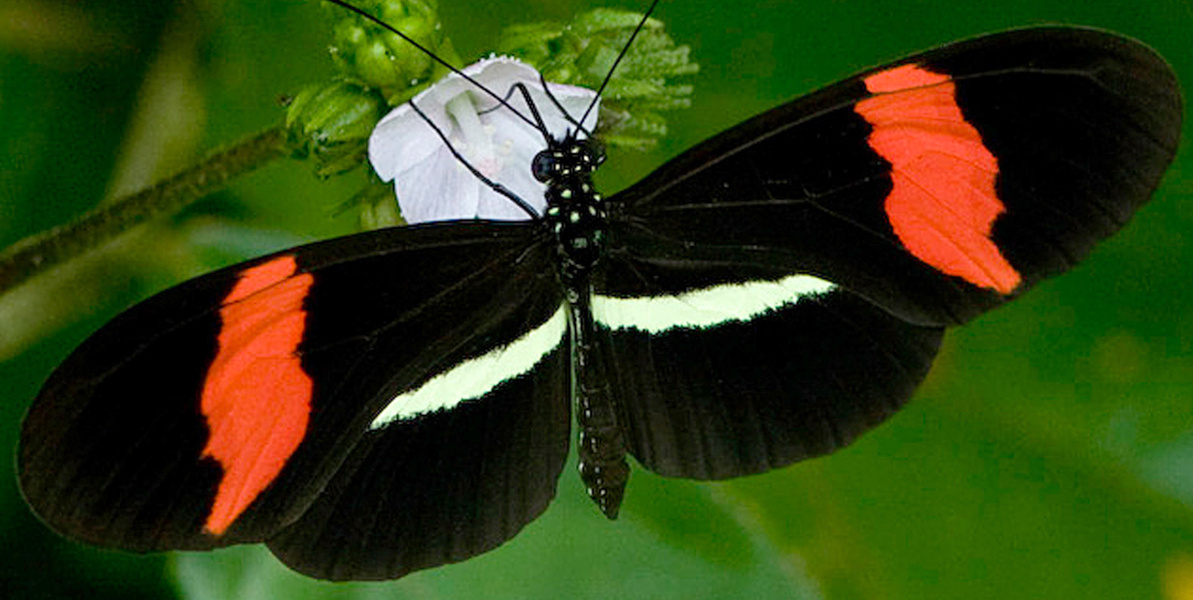Butterflies Evolved UV-vision to Help Find Mates

The evolution of vision in butterflies may have led to the wide range of patterns and wing colors present in nature.
Naturalists had once hypothesized that wing-color mimicry, which allowed butterflies to resemble bad-tasting relatives, emerged as a defense mechanism to confuse predators such as birds. That same disguise was problematic, since butterflies that evolved to look alike had a hard time identifying the right species with which to mate.
However, researchers have discovered that Heliconius butterflies born with a duplicate gene that allows them to see ultraviolet colors also have UV-yellow pigment on their wings. Having both genes allows molecules to form in the eyes that are more sensitive to UV light. Thus the corresponding UV pigmentation may help the butterflies survive by facilitating the search for mates, leaving them with more time for reproducing, eating and thriving.
"We think that by switching to a new way of making yellow, the mimetic butterfly species were better able to tell each other apart," said Seth Briscoe, a researcher at the University of California, Irvine.
Scientists believe that butterflies developed a copy of their UV-vision gene and began displaying UV-yellow pigment 12 million to 25 million years ago. Of the 14,000 butterfly species in the world, only the Heliconius living in the forests of Mexico and Central and South America are known to have the duplicate gene.
The study was published online recently by the journal Proceedings of the National Academy of Sciences.
- Image Gallery: Beautiful Butterflies
- Why Butterflies Have 'Eye Spots'
- 10 Amazing Things You Didn't Know About Animals
Get the world’s most fascinating discoveries delivered straight to your inbox.



